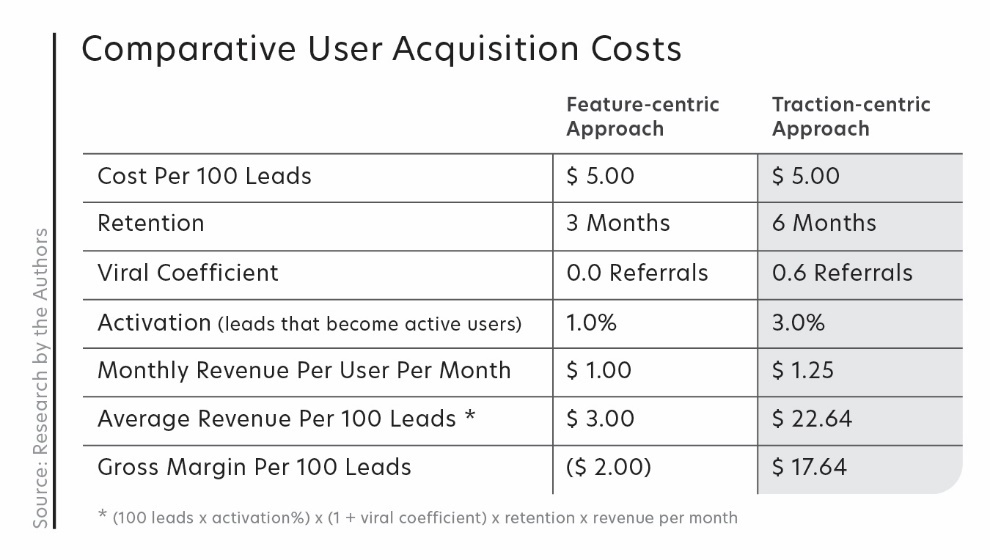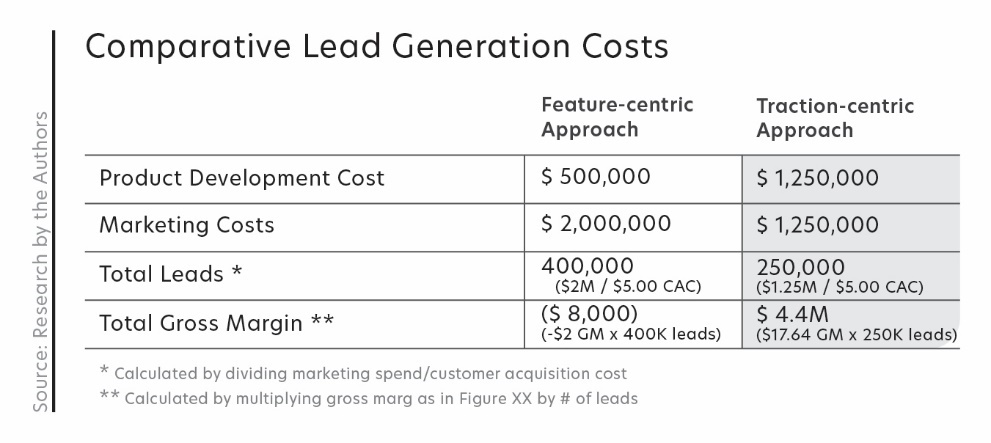Product-Centric Growth Trumps Sales-Centric Growth
Originally published as part of, “The Day Before Digital Transformation” by Phil Perkins and Cheryl Smith
It is common for organizations today to launch an app and spend large sums of money to acquire users without doing any of the activities we have discussed. We know this because we have been involved with many major organizations over the past decade who have wanted to take this approach. The processes that worked successfully for them in the past, will work successfully for them in the future—so the logic goes. We have (usually) been able to change their thinking by showing them that what appear to be small changes in traditional approaches have significant impacts in the digital world.
The numbers we use in the next two models are taken from real-world experiences. We are not presenting a specific example here because digital efforts differ by size, scope, and industry. The numbers we use here are simply meant to show how what appear to be minor tweaks to traditional marketing approaches have major impacts in the digital world, although the numbers do have a basis in reality.
We illustrate the impact of using a traditional approach to customer acquisition versus first employing the concepts we have discussed here how to build traction into your digital products and services before scaling, what we refer to as a digital approach. (Figure 33)

In the traditional approach, an organization spends $5.00 to acquire 100 users before knowing the extent to which they will be retained. Assuming 1% of them will stay with the product or service for three months and generate $1 each for those three months (whether in advertising revenue or in fees), the cost to acquire that block of customers was more than the revenue generated. $2.00 was lost for every $5.00 spent on user acquisition.
In the digital approach, the organization first invests in onboarding and retention and makes it easy for customers to make referrals. This organization also spends $5.00 to acquire 100 users, but a higher percentage of them are activated (3% rather than the 1%), and they stay longer (six months versus three months). They also each bring on a friend at some point during the 6 months, which we represent by receiving slightly higher monthly revenue ($1.25 since we do not know exactly when the friend came on board during the timeframe). In this scenario, the organization made $17.50 in gross margin (total revenue minus the original marketing costs, or $22.50-5.00=$17.50). And the organization acquired new customers without spending additional marketing dollars.
If we expand the model in Figure 33 to a hypothetical organization that has allocated a $2.5M budget to launch a new mobile app, it shows the stark difference between success and failure. The organizations that choose to spend $500,000 on the mobile app using the traditional feature-centric approach, then spend $2M promoting it will tend to fail. Organizations that use the digital approach and focus on building user habits first will be more likely to spend $1.25M on the mobile app and $1.25M on promoting it with significantly better results as illustrated in Figure 34.
New digital solutions typically fail when organizations spend significant capital on marketing without building user habits, retention mechanisms, and the opportunity for virality first.
Organizations that start with select customer groups, deliver exceptional onboarding and customer success activities, and provide advocates with easy methods to help the solution go viral are much more likely to succeed, or at least live to fight another day.
